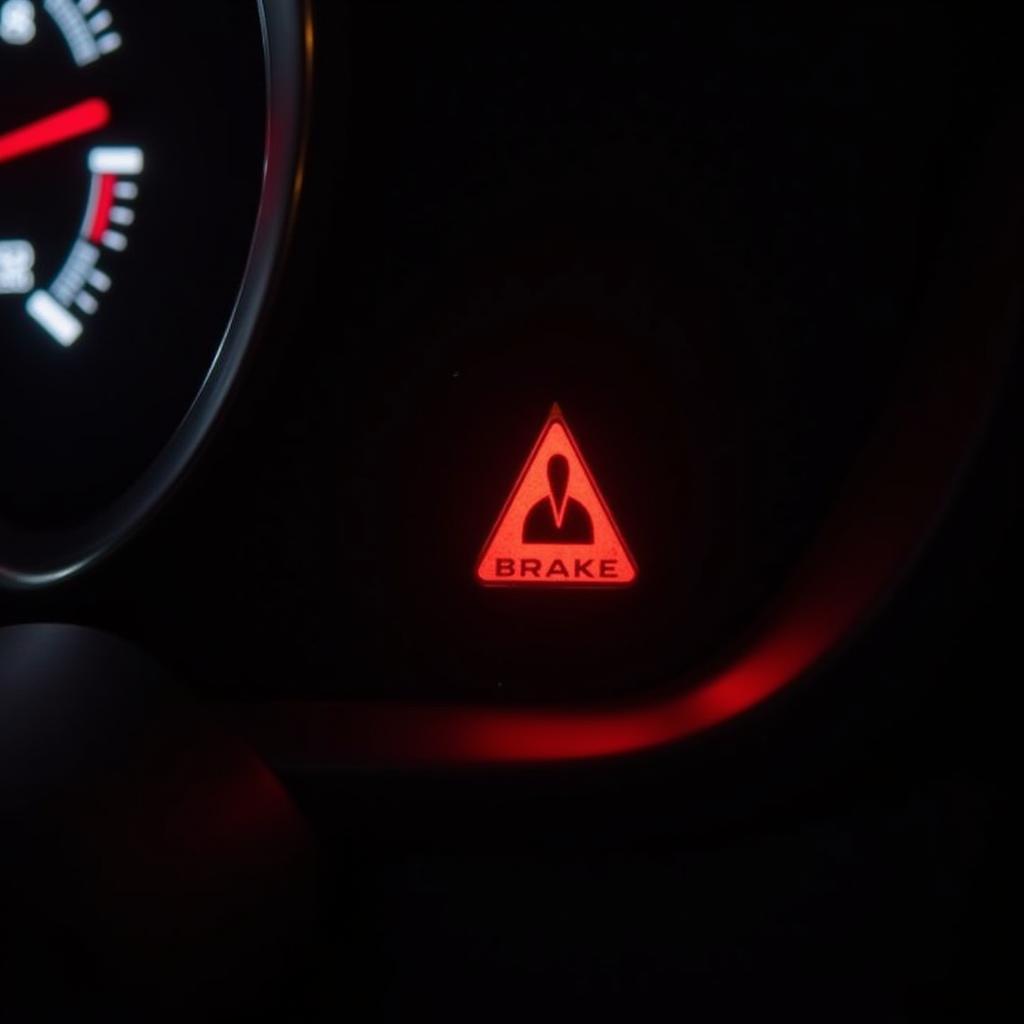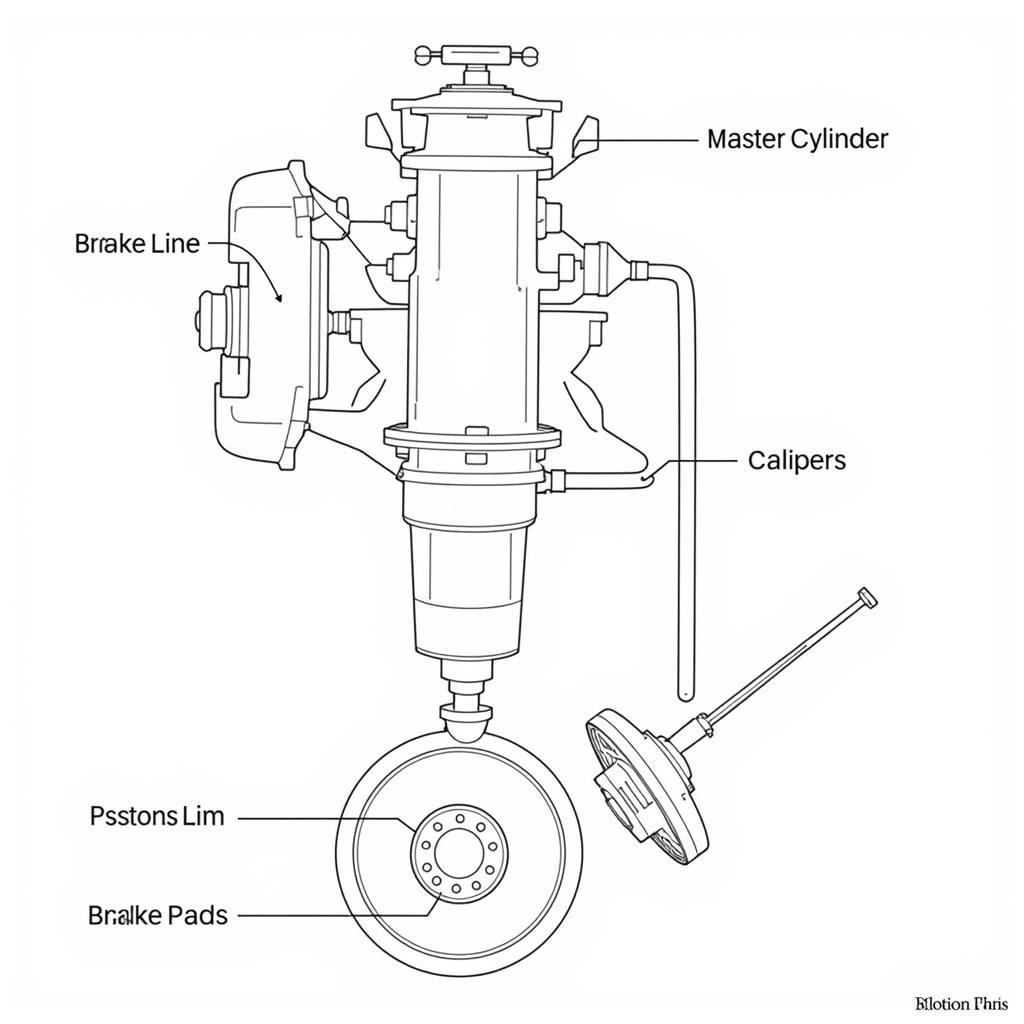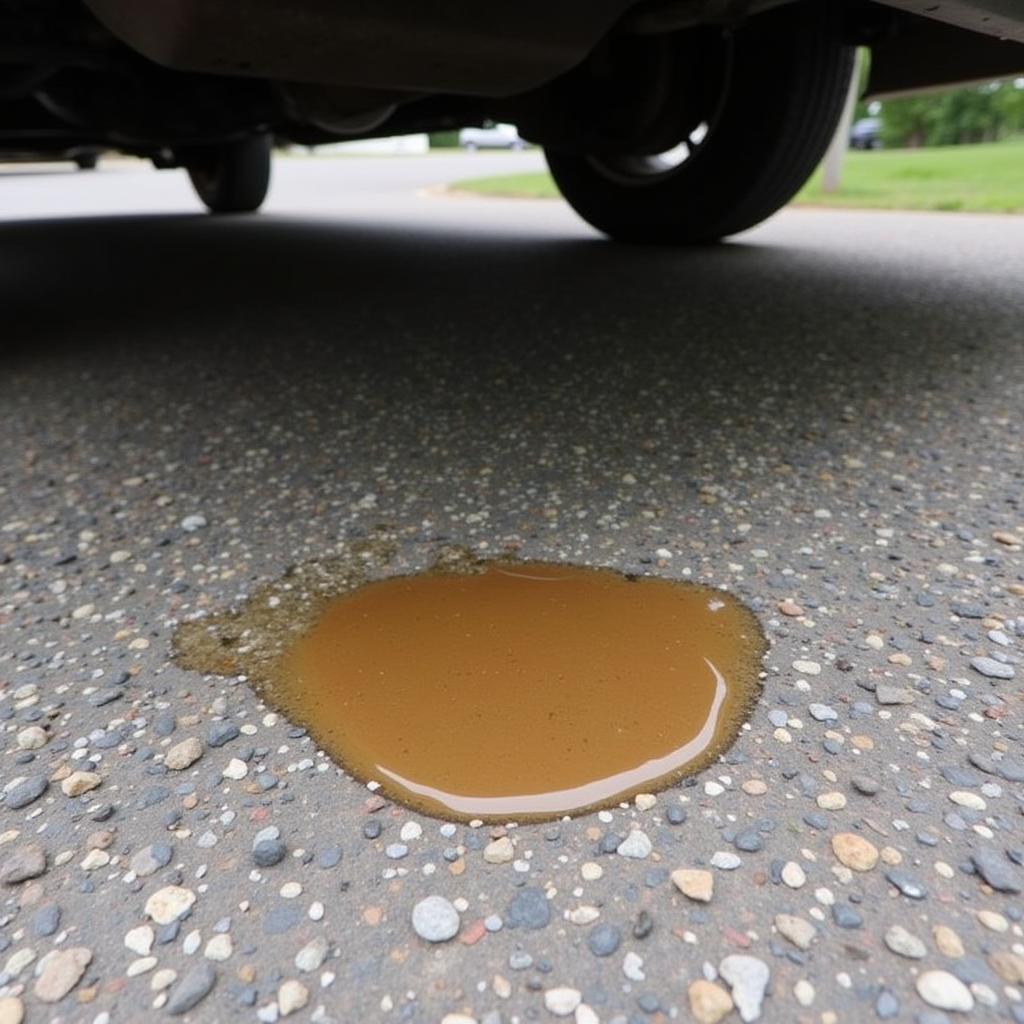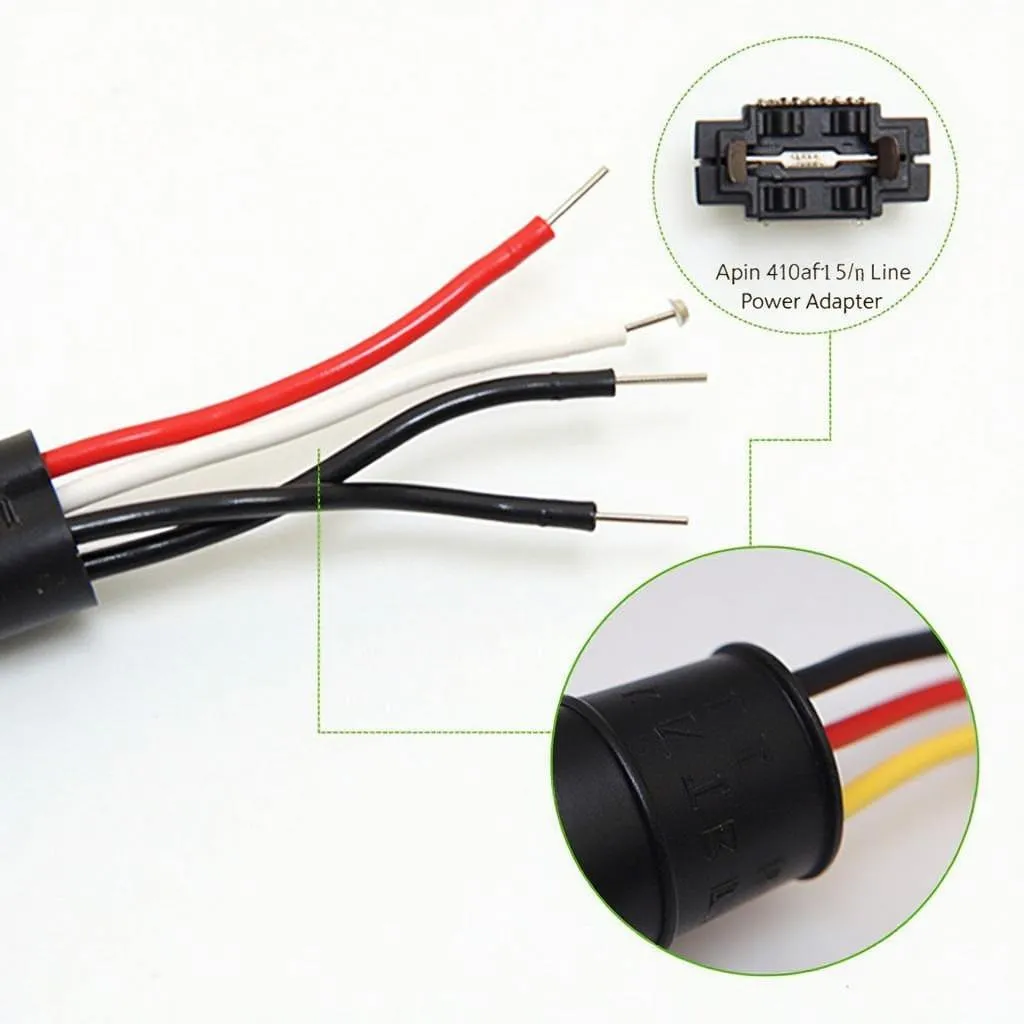The appearance of a brake hydraulic system red warning light on your dashboard is never a welcome sight. It signals a potential problem with your vehicle’s braking system, a critical safety component that demands immediate attention. Ignoring this warning light could lead to reduced braking ability and increase the risk of an accident. This comprehensive guide delves into the common causes of this alarming signal, empowering you with the knowledge to address the issue effectively.
 Red brake warning light illuminated on a car dashboard
Red brake warning light illuminated on a car dashboard
Understanding Your Brake Hydraulic System
Before we dive into the reasons behind the warning light, it’s crucial to understand how your brake hydraulic system operates. This system uses a combination of fluid, hoses, calipers, and other components to transfer the force you apply to the brake pedal into stopping power at the wheels.
In simple terms, when you press the brake pedal, it activates a piston in the master cylinder, pushing brake fluid through the brake lines to the calipers at each wheel. This pressure forces the brake pads to clamp against the rotors (or drums), generating the friction needed to slow down or stop your vehicle.
 Diagram illustrating the key components of a car's brake hydraulic system
Diagram illustrating the key components of a car's brake hydraulic system
Common Causes of a Brake Hydraulic System Red Warning Light
The red brake warning light serves as a general indicator of a problem within this complex system. Here are some of the most frequent culprits:
1. Low Brake Fluid Level
This is the most common culprit behind the red warning light. Brake fluid is the lifeblood of your braking system, and a leak or gradual depletion can trigger the warning.
What to do:
- Check your brake fluid level. Locate the brake fluid reservoir under the hood (refer to your owner’s manual for its exact location). The reservoir will have minimum and maximum markings. If the fluid level is below the minimum mark, it needs to be topped up.
- Add the correct type of brake fluid. Using the wrong type of brake fluid can damage your braking system. Refer to your owner’s manual for the recommended brake fluid type for your vehicle.
- Inspect for leaks. If the fluid level is low, carefully examine the area around the reservoir, brake lines, and calipers for any signs of leaks. Look for wet spots, drips, or discolored areas.
Expert Insight: “Never underestimate the importance of regular brake fluid checks. Just like any other fluid in your car, brake fluid can deteriorate over time, reducing its effectiveness,” says John Miller, a seasoned automotive engineer with over 20 years of experience. “Maintaining the correct brake fluid level is a simple yet crucial step in ensuring optimal braking performance.”
2. Worn Brake Pads
Brake pads are designed to wear down over time with use. When they wear too thin, a sensor can trigger the warning light.
What to do:
- Inspect your brake pads. If you’re comfortable with basic car maintenance, you can visually check the thickness of your brake pads through the spaces between the wheel spokes. Look for a minimum thickness of 1/4 inch.
- Listen for noises. Screeching or grinding sounds when applying the brakes are also strong indicators of worn brake pads.
bmw brake warning light 1 series
3. Brake System Leak
A leak in your brake system can cause a rapid drop in brake fluid pressure, significantly reducing your braking power and illuminating the red warning light.
What to do:
- Look for signs of leaks. As mentioned earlier, inspect all components of your brake system for leaks. Pay close attention to connections and hoses.
- Check the ground under your car. A puddle of brake fluid under your parked car is a clear sign of a leak.
 A pool of brake fluid forming under a car, signaling a potential leak in the brake system
A pool of brake fluid forming under a car, signaling a potential leak in the brake system
4. Faulty ABS System
While less common, a problem with your Anti-lock Braking System (ABS) can also trigger the brake warning light. The ABS system prevents your wheels from locking up during hard braking, and a malfunction can disrupt the normal operation of your brake system.
What to do:
- Pay attention to other warning lights. A faulty ABS system may trigger its own dedicated warning light on the dashboard.
- Note any unusual braking behavior. If you experience unusual pulsing or vibrations in the brake pedal during normal braking, it could indicate an issue with the ABS system.
bmw low brake fluid warning light x1
volkswagen beetle brake pad warning light
What to Do When the Brake Hydraulic System Red Warning Light Comes On
If the red brake warning light illuminates while driving:
- Pull over safely. Find a safe location to pull over as soon as possible. Continuing to drive with a potentially compromised brake system can be extremely dangerous.
- Check the brake fluid level. If the level is low, carefully add the correct type of brake fluid until it reaches the maximum mark. However, proceed with caution if you suspect a leak.
- Do not drive if… You notice signs of a leak, hear unusual noises when applying the brakes, or the brake pedal feels soft or spongy. Call a tow truck and have your vehicle transported to a trusted mechanic for a thorough inspection and repair.
2002 town and country brake warning light
brake fluid level warning light
Conclusion
The brake hydraulic system red warning light is a serious safety concern that should never be ignored. By understanding its potential causes and taking appropriate action, you can help ensure the safety of yourself, your passengers, and other road users. Remember, regular vehicle maintenance, including brake inspections, is crucial for preventing unexpected brake problems and keeping your car in optimal condition.

